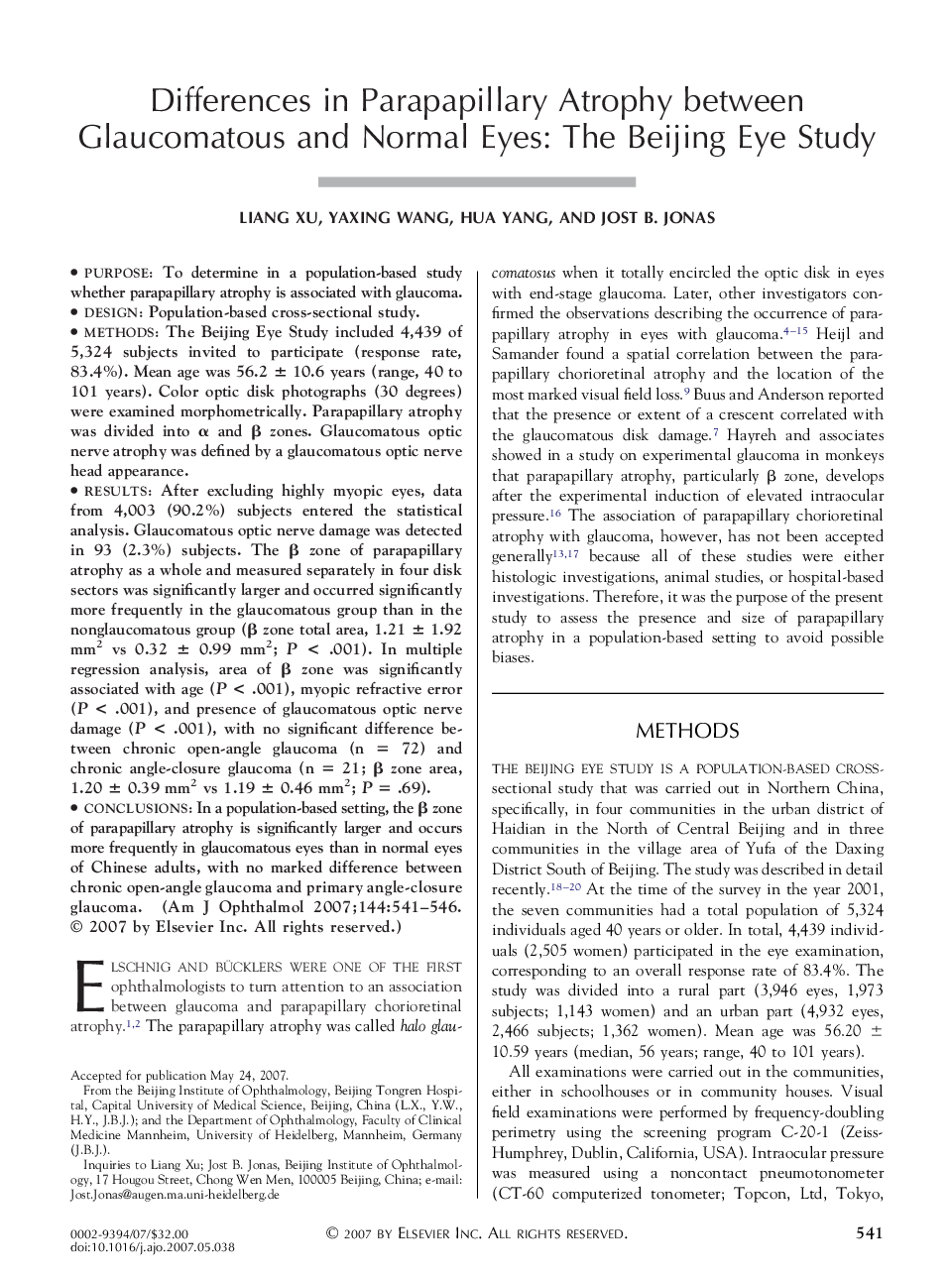| Article ID | Journal | Published Year | Pages | File Type |
|---|---|---|---|---|
| 4004582 | American Journal of Ophthalmology | 2007 | 6 Pages |
PurposeTo determine in a population-based study whether parapapillary atrophy is associated with glaucoma.DesignPopulation-based cross-sectional study.MethodsThe Beijing Eye Study included 4,439 of 5,324 subjects invited to participate (response rate, 83.4%). Mean age was 56.2 ± 10.6 years (range, 40 to 101 years). Color optic disk photographs (30 degrees) were examined morphometrically. Parapapillary atrophy was divided into α and β zones. Glaucomatous optic nerve atrophy was defined by a glaucomatous optic nerve head appearance.ResultsAfter excluding highly myopic eyes, data from 4,003 (90.2%) subjects entered the statistical analysis. Glaucomatous optic nerve damage was detected in 93 (2.3%) subjects. The β zone of parapapillary atrophy as a whole and measured separately in four disk sectors was significantly larger and occurred significantly more frequently in the glaucomatous group than in the nonglaucomatous group (β zone total area, 1.21 ± 1.92 mm2 vs 0.32 ± 0.99 mm2; P < .001). In multiple regression analysis, area of β zone was significantly associated with age (P < .001), myopic refractive error (P < .001), and presence of glaucomatous optic nerve damage (P < .001), with no significant difference between chronic open-angle glaucoma (n = 72) and chronic angle-closure glaucoma (n = 21; β zone area, 1.20 ± 0.39 mm2 vs 1.19 ± 0.46 mm2; P = .69).ConclusionsIn a population-based setting, the β zone of parapapillary atrophy is significantly larger and occurs more frequently in glaucomatous eyes than in normal eyes of Chinese adults, with no marked difference between chronic open-angle glaucoma and primary angle-closure glaucoma.
